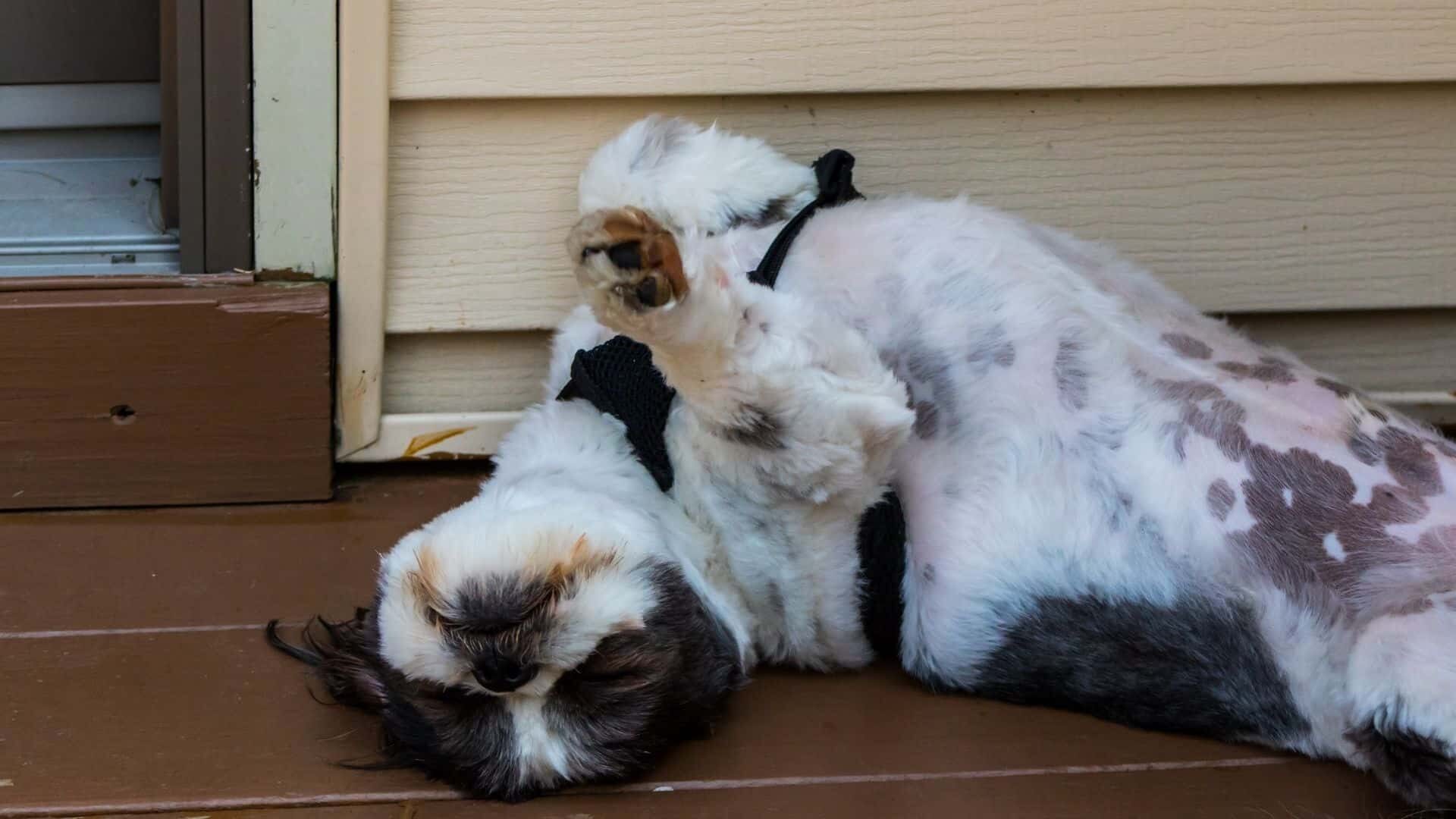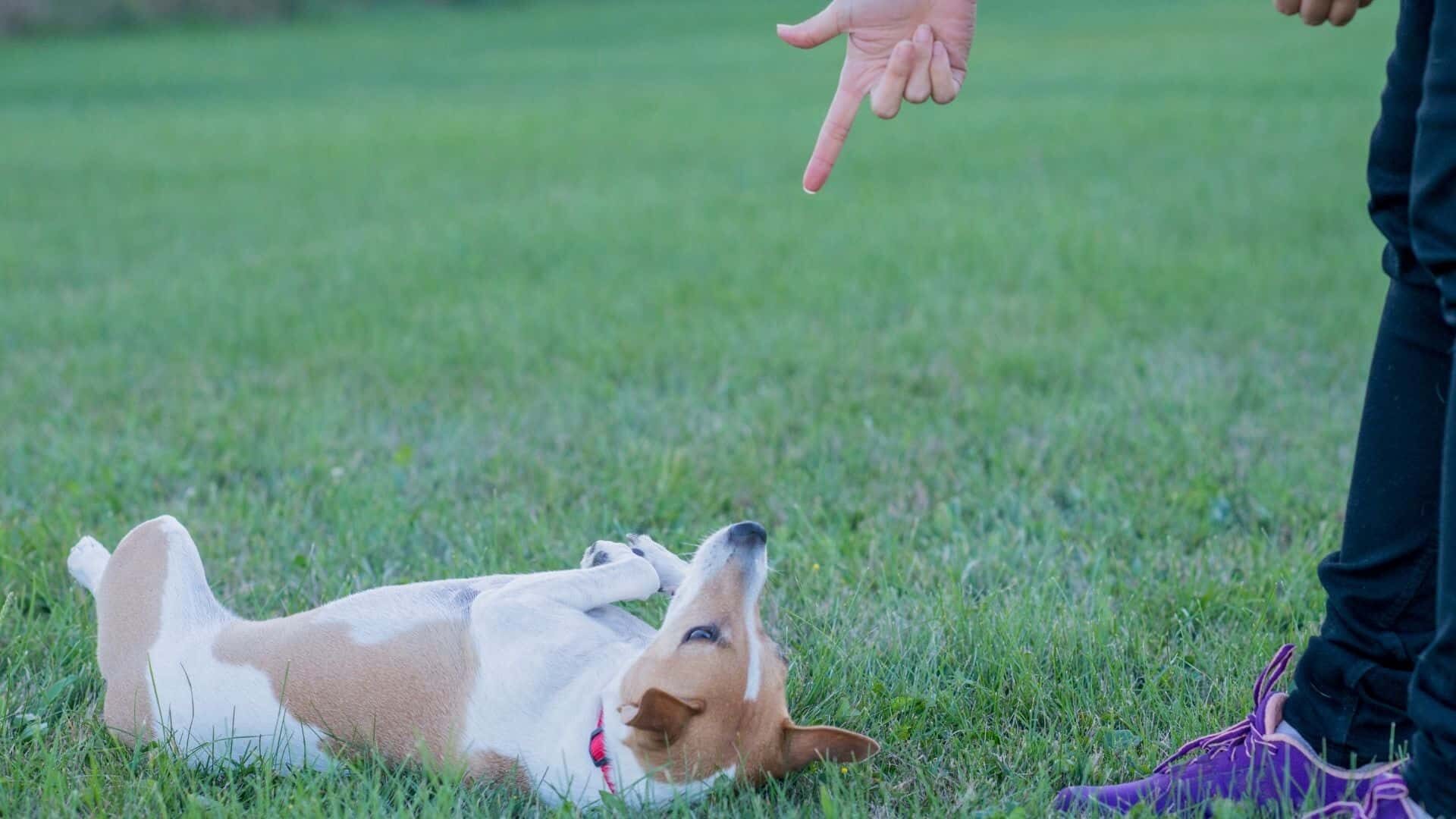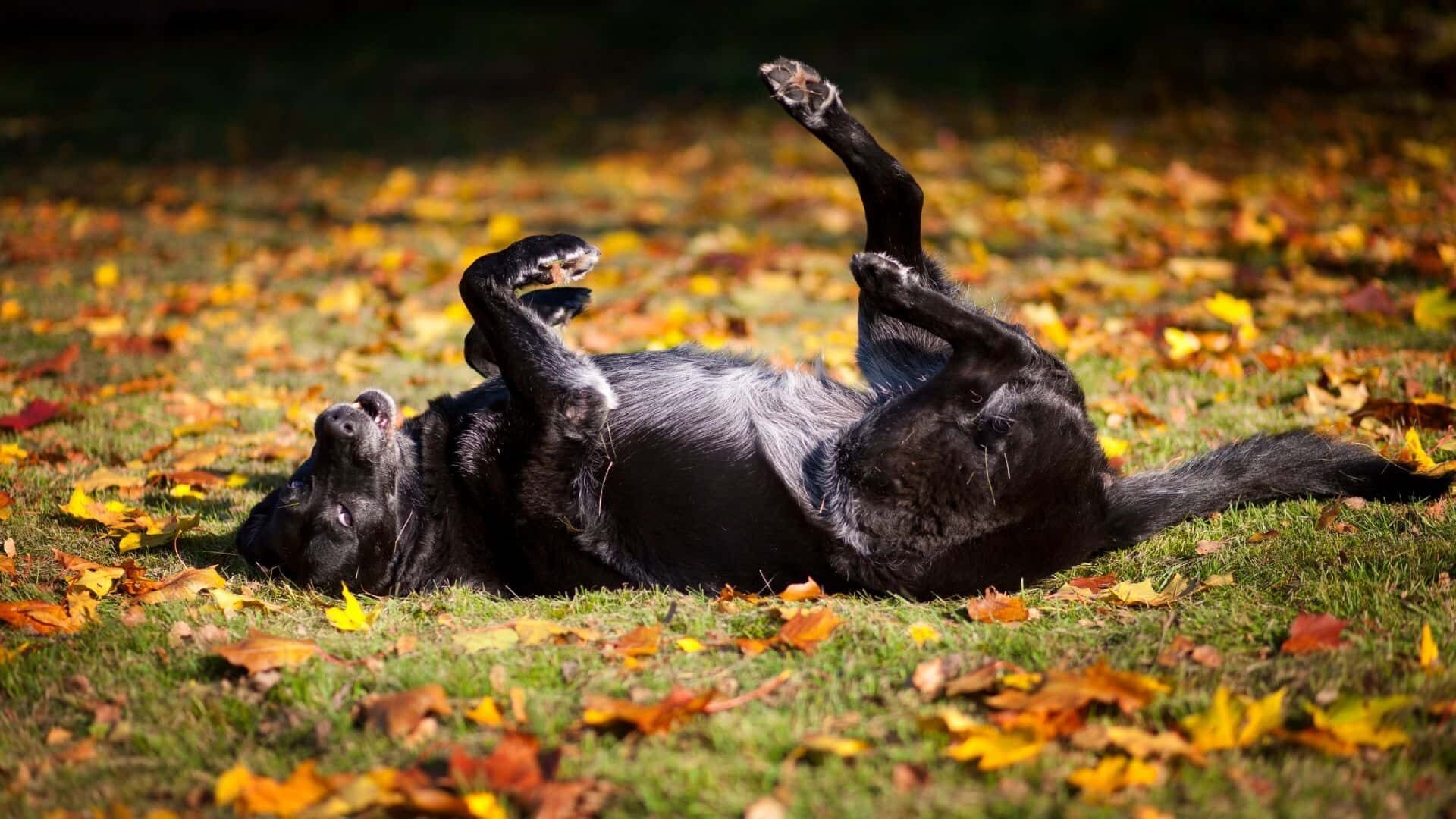Teach your dog the adorable and entertaining trick of “rolling over.” Your dog should be able to sit and lie down on command before you begin. Rolling over is a technique that requires a lot of practise and patience, which makes it more difficult to teach than some other orders. Your dog will soon be turning over with a little patience.
So now that you’ve taught your dog to sit, remain, and lie down, you’re ready to move on to the next step: roll over. This trick is easy to learn and looks great. Prepare your dog for the trick by teaching him the fundamentals. Then, discover how to teach your dog to roll over using a reward-based method. Practice makes perfect, so have fun with it and your dog will soon be rolling over on his back.
How to teach a Dog to roll over?

Teaching your dog to turn over on command is a fun and rewarding skill to learn. It is not necessary to be a professional dog trainer to teach your dog to roll over, but you must first teach your dog to sit and lie down before attempting this trick.
Rolling over can be taught without the use of a clicker, however clicker training can speed up the process of teaching dogs new behaviours. You don’t need to use a clicker to teach your dog to turn over; all you need is some dog treats and a few basic instructions.
Step 1: Train in a comfortable and conducive setting
Your dog will spend a lot of time rolling about on the ground, so look for an indoor place with a soft floor This includes shutting off the television, locking the windows, and removing other people and animals from the room so that your dog can concentrate.
Step 2: Deconstruct it into its component parts
On the surface, it would be ideal for your dog to roll over in one fell swoop, but this is not the case for most dogs. Your dog may try to obtain the treat by jumping up, wriggling, or turning its head to the other side. Your dog’s training can be broken down into smaller chunks if this is the case.
- Hold a goodie in front of your dog’s nose and move it toward his shoulder while he is lying down. When the dog turns its head, reward it with a goodie by clicking or praising it. The dog should be able to consistently turn its head as a result of this practise.
- Next, cease rewarding your dog for every time he or she turns his or her head. Reward only those head turns that are the closest to his resting on his side when you give him a treat.
- Only give your dog a pat on the head and a treat if it is entirely on its side. Using this method, you can gradually select the behaviors that are closest to rolling over, with each additional behavior getting the dog closer to completely rolling over.
- Holding a treat in front of your dog’s nose is an easy way to teach him to sit or stand once you have him lying on his back and stable.
Step 3: You should make sure that your dog is able to lie down on its own
Since the dog needs to be lying down to perform the roll over trick, it’s a crucial step in the process. Start by teaching your dog to “lay down” if he doesn’t already know how to.
Begin by allowing your dog to sleep on his back. He may benefit from this when he begins to learn how to roll over.
Step 4: Instruct your dog to take a seat or lie down
With its belly on the ground, paws resting in front of it, and head looking up, you’re ready to begin teaching your dog to roll over.
Step 5: To get your dog to stand in a certain place, use a treat
Use enticing to finish these next several tasks. For example, you can lure your dog into an area by using something they’ll follow, like a reward. Move your hand carefully from their nose to their shoulder, starting at the top. Following the treat, your dog’s head should now be positioned over their shoulder. Take note of Mark and reward him!
Step 6: Treats are not necessary for repeating process
Repeat the exercise with an empty hand until your dog is able to turn over reliably while you guide them with the treat lure. Move your hand as if it were a treat, then pretend to eat it.
You can use a nearby container of treats to reward your dog as soon as he or she begins to turn over, or you can simply praise your dog as soon as he or she does so. Repeat this exercise until your dog is able to reliably follow your hand movement even when you are not carrying a treat in your hands.
Step 7: The “turn over” cue is a good place to start
The “roll over” command can now be used. Say “roll over,” count to three, and use the hand movement to lead your dog through the rollover for a smooth transition. Roll over. Praise and reward your dog for completing the roll successfully. This should be done three times. Do it again after counting to four on the fourth try. Once you’ve counted to five, then move your hand.
Then do your hand movement while saying the roll over cue and waiting for a count of the number you’re up to. To get your dog to roll over before you deliver the hand signal, keep doing this. In order to get your dog used to rolling over when the verbal signal is given, practise for extended periods of time.
Step 8: Practice makes perfect
Continue to practise the “roll over” command at least three or four times a week once your dog has mastered this command. Even after performing admirably, dogs have been known to “forget” what they’ve learned. Make a few more repetitions of the hand gesture after saying the word to help your dog remember it.
Behavior Issues in dogs while learning roll over command and proofing

Moving forward too quickly can cause your dog to make a lot of blunders, such jumping up or twisting its head in the opposite direction. Slowly retrace your dog’s steps back to the point when he or she was able to successfully roll over.
Some dogs are reluctant to roll over and expose their tummies when laying on their backs. Make sure your dog understands that training is a game and not a chore. Scratch its tummy, click or praise it, and give it a treat each time it offers you its belly if it enjoys belly rubs.
Keep your tone upbeat throughout the meeting. Relax and take a big breath. It may take some time, but don’t worry about it.
Short and upbeat training sessions are also important. For both you and your dog, too extended training sessions tend to be discouraging. Each session should be no more than 10 minutes long; end it on a high note.
What are the precautions to take when you teaching dog to roll over?
As you begin teaching your dog to roll over, keep these things in mind:
1. Checking with your veterinarian before starting
Check to see whether your dog has been given the go-ahead to roll over. It’s best to avoid this technique if your dog has any bodily concerns (such as spinal, muscular, skeletal, or other issues).
3. Cluttered surroundings
When and where you teach a dog to roll over should be carefully considered. Because they could fall off the couch or bed’s edge, never ask your dog to roll over. In addition, you don’t want your dog to run into a wall, a chair, or any other object. On the other hand, some dogs may find it difficult to turn over on a hard surface.
4. Forcing your dog to perform an action with which they are not happy
Keep an eye on your dog’s behaviour while you train, and only ask your dog to roll over in settings where they appear to be in good health and comfort. Do this skill indoors and away from other dogs and strangers because your dog is in a vulnerable posture when completing a body roll. Keep an eye out for signs of soreness, and if rolling over seems to be causing your dog any discomfort, stop practising.
How do you quickly and easily train your dog to roll over?
Learn how to teach your dog to roll over in few simple steps.
- Make sure that your dog is in a ‘down’ position in front of you by kneeling down and placing it in front of you. With your hand facing up, place a goodie in front of their nose.
- Then, while arching your arm over their head, gently nudge their chin toward the back of their shoulder.
- It’s possible that your dog will flop over on its side when its nose follows the treat, causing it to lose its equilibrium. This is the time to thank them by giving them the goodie and praising them.
- Move your hand so that your dog must roll over to the other side, and then repeat step 4 again. Give them the reward as soon as their body turns over.
- Try to persuade them to roll over in one motion after a few more repetitions to reinforce what they’ve learned. When they get it right, add “turn over!” as a command.
- They’ll learn to turn over on their own with practise and treats.
Watch 5 easy tricks you can teach your dog at home | Video
Is it possible to teach a dog to roll over without using any kind of reward system?
While teaching a dog to turn over without treats is possible, you’ll get more out of your training investment if you do so. Rolling over can be taught quickly and easily with a reward! If your dog enjoys anything else, such as a belly massage, a dog toy, or lots of positive reinforcement, you might use that instead of or in combination with cookies as a training reward.
It is possible to educate a well-adjusted elderly dog to roll over.
Yes, you can teach a senior dog to roll over if he or she is healthy and active. Consult with your vet first to make sure. As a result, you may choose to teach your dog a different trick—like how to shake or speak—instead of teaching him a new one. In the end, it’s better to teach a puppy to roll over than it is a senior dog.
What should I do if my dog is unable to roll over?
It’s likely that your dog is unable or unwilling to roll over because he feels unsafe. After all, executing a full roll puts your dog in a vulnerable position, and it might also be uncomfortable for him or her to do so. You don’t have to compel your dog to perform the trick if you sense that he or she is hesitant. Many more amusing cues can be used instead. Teach your dog to open a cabinet by pulling on a towel tied around the handle or to push a cabinet shut with their paw or nose, for example. Dogs are great for giving high fives, too!
Do dogs enjoy being rolled on their stomachs?
hat’s not always the case. This could also be a way for a dog to demonstrate their submission to you. Your dog’s behaviour is best understood by getting to know their personality.
To teach your dog to turn over, what is shaping and how would you implement it in your training regimen?
Using shaping as an operant conditioning strategy, it’s possible to reward behaviour that becomes closer and closer to what you want. Your dog can be taught a variety of skills by rewarding him when he sits, then lying down, and finally rolling onto his back.
The Verdict

It’s a great way to spend quality time together with your dog by learning how to train it to roll over. But if you have a nimble canine, keep this one for yourself, and focus on happiness and positivity above all things.
Try again tomorrow if you’re not satisfied with your current endeavors today. Despite the fact that it may take some time, after your dog has mastered this adorable new party skill, you can congratulate yourself on becoming an even better trainer.
Bottom up
Please comment below about your ideas and share this “How to Teach Dog to Roll Over in 5 Minutes: Stepwise Guide” article with your friends.
Stay tuned with our website to find out more exciting stuff. Don’t forget to check out our previous articles too.
Until the, Read about, How to Remove Dogs Undercoat at Home: Guide with Techniques





